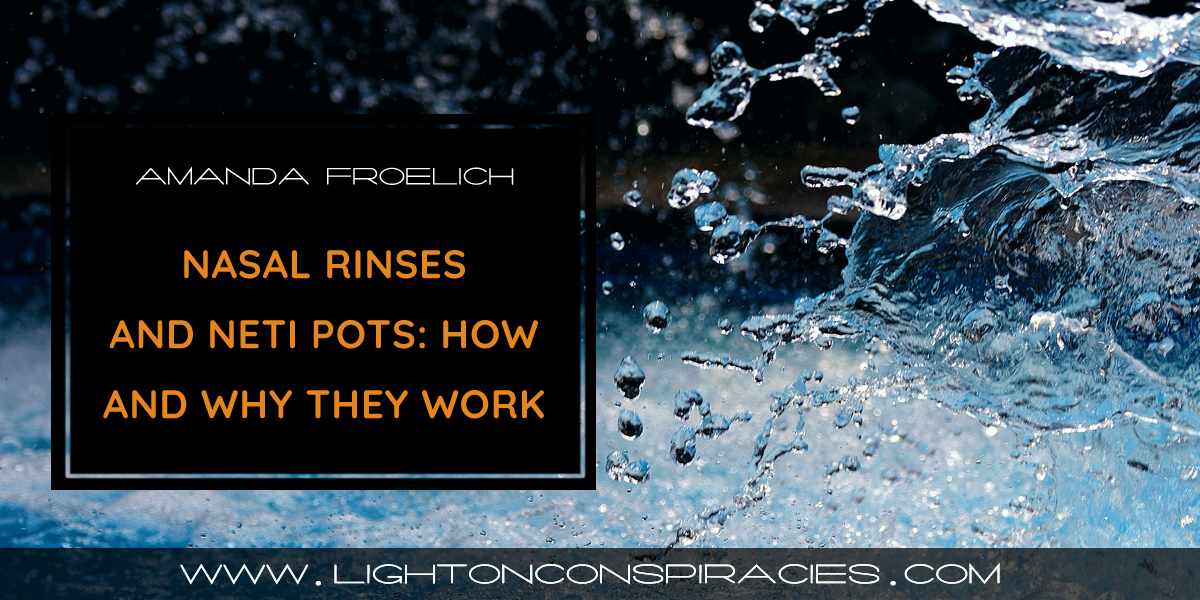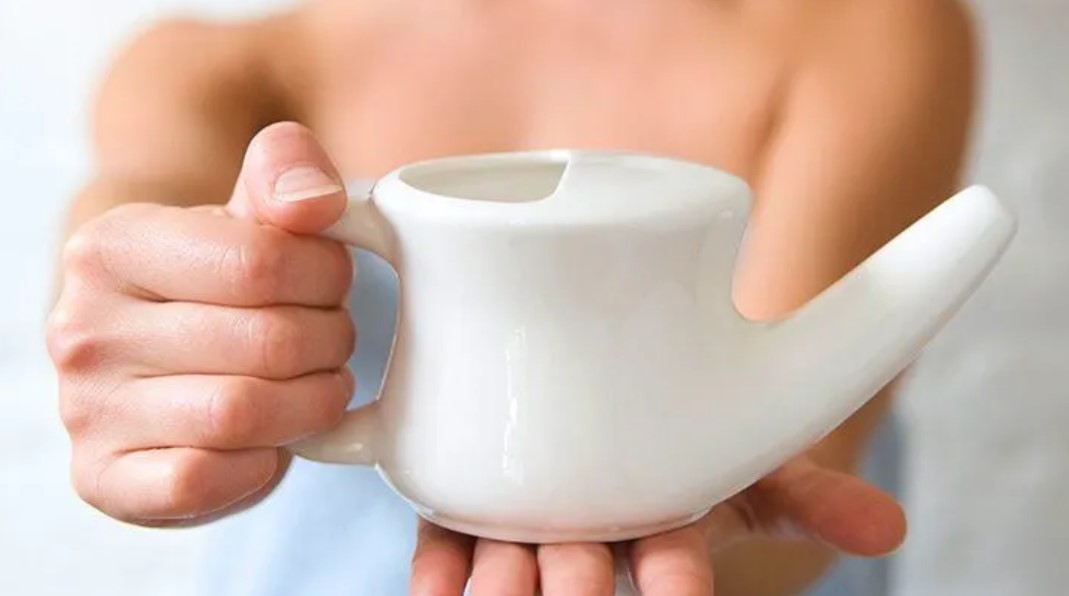Allergy sufferers and those with colds or chronic sinus infections know well the misery that can accompany these conditions. Symptoms may include facial pain, nasal congestion, coughing, headache, and bad breath. Nasal irrigation, sometimes called nasal lavage, can be effective in loosening the blockage and clearing mucus from the nasal cavity. Flushing the nose and sinuses is considered a safe practice, with few side effects, that can provide fast and effective relief.
Types of Nasal Irrigation
The sinuses are air-filled cavities located within the bones of the face and around the nasal cavity and eyes. There are various types of nasal rinses and devices that can help clear irritants from the nasal passage. They include neti pots, nasal sinus rinses, and saline nasal sprays.
Nasal Cavity
Source: American Rhinologic Society
What is a neti pot?
The neti pot was first used in ancient India, and is considered the oldest method of irrigating the nasal passage. In fact, the word neti means nasal cleansing in the Sanskrit language. Yogis in India believed that clear breathing was necessary to achieve clear thinking, an idea that continues to resonate with some today.
How does a neti pot work?
A neti pot is shaped like a teapot, or genie’s lamp, with an elongated spout. Typically, it is filled with a saline (salt) solution and mixed with distilled, sterile or boiled and cooled tap water. The U.S. Food and Drug Administration (FDA) cautions that, unboiled “tap water isn’t safe for use as a nasal rinse because it’s not adequately filtered or treated. Some tap water contains low levels of organisms — such as bacteria and protozoa, including amoebas — that may be safe to swallow because stomach acid kills them. But in your nose, these organisms can stay alive in nasal passages and cause potentially serious infections.”
Correct head position is necessary to gain the full benefit of using a neti pot. It is normal to need some practice to find the right position. The correct process for using a neti pot is:
- Leaning over a sink, tilt your head sideways with your forehead and chin roughly level to avoid liquid flowing into your mouth.
- Breathing through your open mouth, insert the spout of the saline-filled container into your upper nostril so that the liquid drains through the lower nostril.
- Clear your nostrils. Then repeat the procedure, tilting your head sideways, on the other side.
While plain water can inflame the lining of the nose, saline allows water to move through delicate nasal membranes without irritation. Many people find relief in this type of saltwater irrigation of their sinuses, and it can be more effective than nasal sprays for severe congestion.
Nasal Rinses
Nasal rinses work similarly to the neti pot, but come in a number of different delivery mechanisms. These include squeeze bottles and even a battery-operated, pulsating device that sprays saline directly into the nasal cavity. Like the neti pot, nasal rinses are comprised of a non-medicated saline solution.
People with chronic sinus congestion may be advised to perform nasal irrigation on a daily basis. A consultation with a physician can determine the best treatment option and delivery device.
Nasal Sprays
Most nasal sprays are small, prefilled bottles of normal saline solution that are readily purchased in a drug store. Using a nasal spray can help moisten mucous membranes in the nasal passage and help ease sinus congestion, but it is important to use the spray properly. The American Academy of Family Physicians offers this advice:
- Use the spray as directed by your doctor, and allow two weeks or more to gain the full benefit.
- Store the spray away from direct sunlight, and keep any pressurized container clean.
- Make sure you are able to breathe through each nostril before spraying, or the spray may not be as effective.
- Point the spray toward the back of your nose. A pump spray should not drip down the back of the throat or out the nose.
- Try an over-the-counter saline nasal spray before using a medicated spray.
- Stop using the spray for one to two days if you have nosebleeds, pain, or stinging inside the nose.
- If nosebleeds persist, use only a saline spray, or apply a thin layer of petroleum jelly inside the nose. Speak with your doctor if problems continue.
Nasal sprays typically are not medicated solutions and work well to help moisten dry nasal passages, a problem especially prevalent in wintertime.
Cautions
According to the FDA, “improper use of these neti pots and other nasal rinsing devices can increase your risk of infection.” The American Rhinologic Society concurs with this finding. Since most types of nasal irrigation are used in the presence of nasal infection, cleanliness and sterility are especially important to avoid further contamination.
Special consideration also should be made in these cases:
- Individuals whose immune systems are not functioning properly should check with their doctor before using any type of nasal irrigation treatment.
- Parents of children with nasal allergies or congestion should speak with their health care provider before using.
Used correctly, sinus irrigation removes dust, pollen, and other debris, and helps to loosen thick mucus in the nasal passage. Most patients easily perform nasal irrigation. It can be an effective treatment to relieve the symptoms of swelling and pain associated with sinusitis, allergies, colds, and flu.















